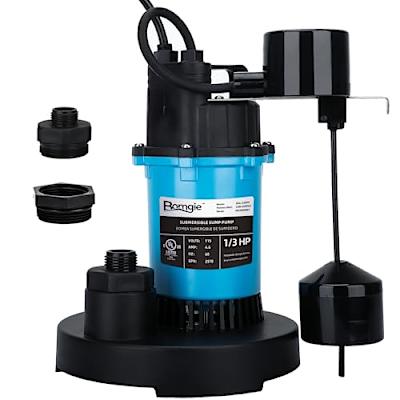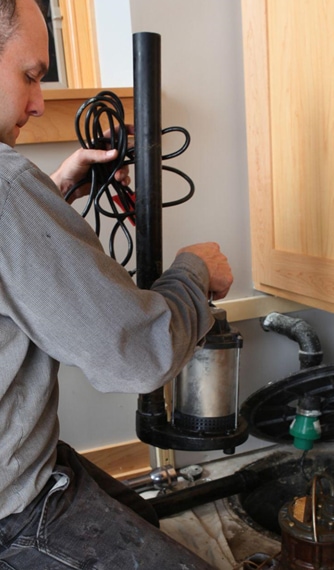Your Guide to Effectively Caring for a Sump Pump
Your Guide to Effectively Caring for a Sump Pump
Blog Article
Just how do you actually feel about Cleaning & Maintenance Tips for Your Home's Sump Pump?

Sump pumps are vital parts in numerous homes, particularly in areas vulnerable to flooding or too much moisture. They assist avoid water damages by effectively removing excess water from basements or crawl spaces. Nevertheless, like any other appliance, sump pumps need normal maintenance to ensure they work properly when required the most. Cleansing your sump pump is an important part of its maintenance, and recognizing just how to do it correctly can save you from pricey repair services and possible calamities.
Introduction
Maintaining a clean sump pump is important for its proper performance and durability. Neglecting this necessary job can bring about blockages, malfunctions, and ultimately, water damages to your home. Therefore, discovering exactly how to clean up a sump pump is critical for homeowners that count on these tools to keep their basements dry and protected.
Comprehending the Sump Pump
Before diving into the cleansing procedure, it's important to have a standard understanding of exactly how a sump pump works. Typically installed in a pit or basin listed below the cellar floor, a sump pump contains several crucial components, consisting of a pump, a float switch, and a discharge pipe. When water collects in the pit, the float switch triggers the pump, which after that pumps the water out with the discharge pipeline, far from the structure's foundation.
Indicators of a Dirty Sump Pump
Knowing when your sump pump needs cleaning is important for avoiding potential malfunctions. Some typical indicators that show an unclean sump pump include strange noises during operation, lowered water circulation, and visible particles in the pit. If you notice any one of these symptoms, it's vital to clean your sump pump without delay to avoid any kind of more concerns.
Getting ready for Cleaning
Before you start cleansing your sump pump, it's essential to take some safety and security precautions. Begin by turning off the power to the pump to prevent any type of electrical mishaps. Furthermore, put on ideal safety equipment, such as gloves and safety glasses, to protect on your own from dust, particles, and possible pathogens.
Step-by-step Guide to Cleansing a Sump Pump
Turning off the Power
Begin by separating the power supply to the sump pump to avoid any type of crashes while cleaning.
Removing Particles and Dust
Utilize a bucket or a scoop to remove any kind of noticeable particles, dirt, or sediment from the sump pit. Dispose of the debris effectively to stop it from obstructing the pump or the discharge pipeline.
Cleansing the Pump and Drift Switch
Once the pit is free from debris, very carefully get rid of the pump from the pit. Examine the pump and the float switch for any type of indicators of damages or wear. Make use of a soft brush or cloth to clean the surface areas and remove any type of accumulated grime.
Flushing the System
After cleansing the pump and float switch, purge the sump pit with clean water to eliminate any type of staying dust or sediment. This will certainly assist guarantee that the pump runs smoothly and efficiently.
Looking For Proper Functioning
Prior to re-installing the pump, perform a quick examination to make sure that the float switch triggers the pump properly. Put some water into the sump pit and observe the pump's procedure. If whatever is operating correctly, you can rebuild the pump and reconnect the power supply.
Maintenance Tips to Keep Your Sump Pump Clean
In addition to routine cleansing, there are numerous upkeep pointers you can follow to maintain your sump pump in ideal condition:
Final thought
Cleansing your sump pump is an essential aspect of its upkeep and ensures that it runs successfully when you require it one of the most. By adhering to the actions laid out in this overview and integrating normal maintenance into your regimen, you can prolong the lifespan of your sump pump and secure your home from water damage.
6 STEPS ON HOW TO CLEAN A SUMP PUMP PROPERLY
UNDERSTANDING SUMP PUMPS
Your sump pump plays a crucial role in protecting your home by managing and removing excess water. It primarily functions as a “shield”, guarding your basement against the damaging effects of water accumulation. The pump is housed in a sump pit in the lowest part of your basement, and its job is to pump out any water that collects there.
During heavy rainfalls or when snow melts rapidly, water can infiltrate your basement, posing potential risks like flooding, structural damage, and harmful mold growth. Here, the sump pump springs into action, pumping out the intruding water and directing it away from your home.
SAFETY FIRST
Before cleaning, remember to prioritize safety. Disconnect the sump pump from the power source to prevent any accidental electric shocks. Also, wear sturdy gloves to protect your hands from any sharp or dirty components within the pump.
REMOVE THE SUMP PUMP
After ensuring your safety, the next step is to remove the sump pump from its pit. Doing this might require careful maneuvering as you don’t want to damage any pump components. Once removed, clean the sump pit to remove any accumulated debris or sludge.
INSPECT THE PUMP
Inspect the pump for any visible signs of wear or damage. Check the power cord, float switch, and impeller housing. If any components look worn out or damaged, consider replacing them to ensure optimal performance.
CLEAN THE PUMP
Thoroughly clean the pump with warm, soapy water. Make sure to rid it of any dirt, gravel, or other debris that might impede its performance. You can use a toothbrush to clean the small, hard-to-reach parts of the pump.
REINSTALL THE SUMP PUMP
Reinstall the pump into the sump pit Make sure it’s positioned correctly to remove the water effectively Once it’s back in place, reconnect it to the power source TEST THE PUMP
Finally, pour some water into the pit to ensure the pump works correctly. It should start automatically and begin pumping out the water; if it doesn’t, check the power source and the positioning of the pump.
Remember, while cleaning your sump pump is an essential part of home maintenance, hiring a professional plumber for a thorough inspection and cleaning at least once a year is also important. This will ensure that your pump is in optimal condition, ready to protect your home from potential water damage.
BEST PRACTICES FOR CLEANING SUMP PUMP DISCHARGE PIPES
Regular Inspection: Regularly inspect your discharge pipes, especially during heavy rainfall or snowmelt periods. Look for any signs of blockage or damage. Early detection of problems can prevent serious issues down the line. Periodic Cleaning: Over time, sediment and debris can accumulate in the discharge pipes, impeding the flow of water. Regular cleaning helps keep the pipes clear and functioning efficiently. You can use a high-pressure water jet to effectively clean the pipes. Insulation During Winter: In colder climates, discharge pipes can freeze, blocking the outflow of water. Protect your discharge pipes from freezing temperatures by insulating them with foam pipe insulation. This will ensure the sump pump can continue to discharge water even in freezing conditions. Proper Positioning: The discharge pipe should be positioned to direct water away from your home’s foundation. Improper positioning can lead to water seeping back into the basement. Ensure the pipe is long enough and angled correctly. Installation of a Check Valve: A check valve prevents water from flowing back into your sump pit after the pump has pushed it out. Installing a check valve helps maintain the efficiency of your sump pump and reduces the risk of flooding. Minimize Pipe Turns: Every curve or turn in the discharge pipe can decrease the efficiency of water flow. By minimizing turns and bends in your discharge pipe, you can increase the efficiency of your sump pump. https://www.fullspeedplumbing.com/how-to-clean-a-sump-pump-properly9999/

We had been brought to that editorial about Steps to Cleaning Your Sump Pump Properly from a pal on a different site. So long as you appreciated our blog entry please do not forget to share it. I take joy in your readership.
Call Today Report this page